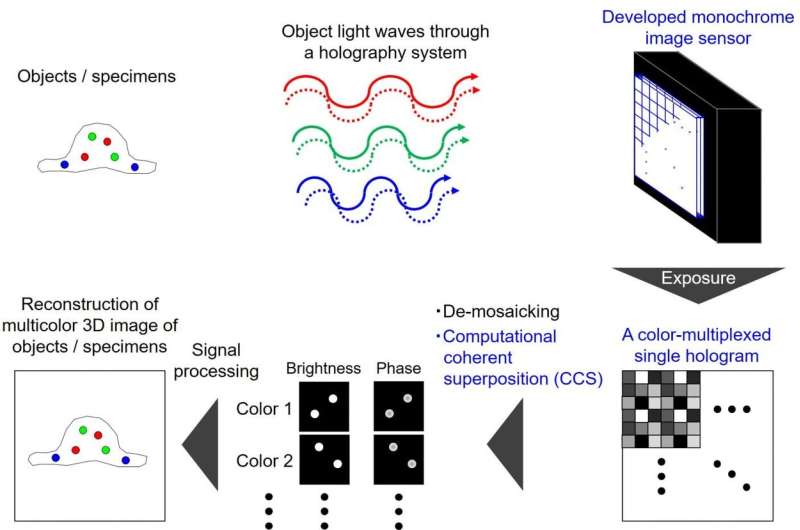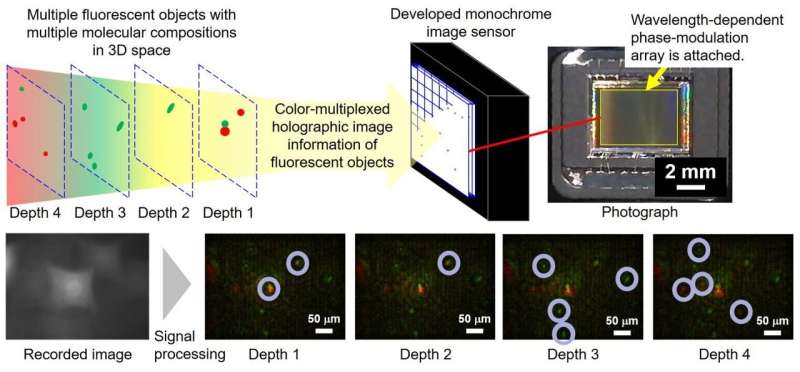Overview of the proposed instantaneous color-multiplexed holographic sensing technique with a computational coherent superposition (CCS) scheme. Credit: National Institute of Information and Communications Technology (NICT), Japan Science and Technology Agency (JST), Toin University of Yokohama, and Chiba University
The National Institute of Information and Communications Technology (NICT), the Japan Science and Technology Agency (JST), Toin University of Yokohama, and Chiba University have succeeded in developing a color-multiplexed holography system by which 3-D information of objects illuminated by a white-light lamp and self-luminous specimens are recorded as a single multicolor hologram by a specially designed and developed monochrome image sensor.
They achieved single-shot color-multiplexed fluorescence holographic microscopy by exploiting digital holography and computational coherent superposition (CCS). The developed microscope acquires the color 3-D information of self-luminous objects with a single-shot exposure and no color filter array. The system does not need a laser light source, and has the capability to conduct multicolor 3-D motion-picture sensing of biological samples and moving objects at video rate. The researchers hope to develop multi-color 3-D microscopy of extremely weak light such as autofluorescence and nonlinear light.
This achievement was published in Applied Physics Letters as an open-access paper on July 22, 2020.
Experimental results for the application to single-shot color-multiplexed fluorescence holographic microscopy. Credit: National Institute of Information and Communications Technology (NICT), Japan Science and Technology Agency (JST), Toin University of Yokohama, and Chiba University
Simultaneous color 3-D sensing of multiple self-luminous objects was demonstrated by recording a single color-multiplexed hologram of fluorescence light. Multicolor 3-D imaging with a white-light lamp was also demonstrated with a single-hologram recording. The researchers exploited CCS, a holographic multiplexing technique, to record a color-multiplexed hologram on a monochrome image sensor without any color filter. Only a single-shot exposure is required to conduct color fluorescence holographic 3-D sensing using the system. The number of exposures required to acquire the information is 250 times less than of that required for a conventional color-multiplexed fluorescence holographic microscope.
The researchers next want to increase the recording speed and develop multicolor holographic 3-D motion-picture image sensing for spatially incoherent light.
More information: Tatsuki Tahara et al, Single-shot wavelength-multiplexed digital holography for 3D fluorescent microscopy and other imaging modalities, Applied Physics Letters (2020). DOI: 10.1063/5.0011075
Journal information: Applied Physics Letters
Provided by National Institute of Information and Communications Technology (NICT)
























